Before it was known as the Fastnet Race
Published on June 21st, 2023
Originally known as the Whitbread Round the World Race (1973-1998) and then the Volvo Ocean Race (2001-2018), the latest edition for the crewed round the world race has a somewhat uninspired name: The Ocean Race 2023.
However, this was not the first time a category of competition has been used for an event name, as it was 1925 when the first edition of the Fastnet Race was held under the title of… The Ocean Race.
Initially held on a course from the Solent, where the start was from the Royal Victoria Yacht Club in Ryde, before the boats exited the Solent to east, then headed to the Fastnet Rock, finishing in Plymouth.
With the start moving to Cowes the following year, the race going biennial in 1931, gaining Bishop Rock as a turning mark, and, as a one-off, finishing back in Cowes in 1933, the course remained largely fixed until the fleet outgrew Plymouth and was moved to Cherbourg-en-Cotentin in offshore racing-friendly France for the first time in 2021.
With a motley collection of seven yachts in 1925, the 2023 start on July 22 welcomes 491 yachts for the 50th edition, ranging from 9m to 30m to tackle the 695nm course.
This is 26% more than the previous record entry of 388 that participated in 2019’s pre-COVID edition – the largest leap in entries in the event’s recent history. Given this is more than twice that of any of the other classic international 600 mile offshore races, the Rolex Fastnet Race is soundly the biggest offshore yacht race in the world.
At the time of the first “Fastnet Race”, ocean racing was marginally more developed in the USA where the first Bermuda Race was run in 1906 and the first Transpac a year earlier. A key historic moment occurred when a New York-based Brit, Weston Martyr sailed in the 1924 Bermuda Race and, becoming utterly captivated by the event and ocean racing, began making waves in the British press that the UK needed its own.
Despite what would transpire, it still took more than a decade for ocean racing to be considered a serious sport in the UK rather than a spirited cruise in company, the example perhaps having been set by successful American bespoke ocean racers like Rod and Olin Stephens’ Dorade, the 1931 and ‘33 winner.
To list some of the development: Since the Fastnet Race has existed since the dawn of the sport, it has seen and, on some occasions partly been responsible for, innumerable design, build and technological steps forward in racing yachts. This has been encouraged by top level competition, especially over the four decades when it was at the center of what would become one of the most elite of events in international yacht racing: the Admiral’s Cup.
Long keels were replaced by separate fin, then bulb keels and to spade rudders with the first flying/foiling boats introduced to the race in the last decade in the IMOCAs and Ultim trimarans. Rigs have gone from schooners, to ketches and yawls to masthead and then fractional sloops to, in the rarified cases of the Ultim, to rotating wingmasts that can be canted to weather.
Sextants and logs have been replaced by RDF, Decca/Loran C and ultimately GPS; compasses by fluxgate and ultimately gyro-stabilized affairs. Oilskins coated with tar were replaced with canvas coated in linseed oil before being revolutionized by plastics and then breathable membrane fabrics like GoreTex.
But the greatest advances, arguably creating the biggest performance gains, have come about through materials development and the engineering: hulls have gone from wood in various forms and build techniques, to GRP, to composites like Kevlar and PVC foam cores, culminating the latest state of the art of carbon fiber over a Nomex core with tooling cut by machine to millimeter accuracy, enabling lightweight, yet highly stiff, strong structures.
The benefits of carbon have extended throughout the boat, especially benefitting spars and sails. Similarly, metal work on boats has evolved from steel to stainless steel to aluminum to titanium, while hemp rope was replaced by polyester then aramid to the present state of the art Dyneema, Spectra, and Vectran.
As a result, while the pipe smoking, bully beef eating, Guernsey and sou’wester-wearing crew of Jolie Brise may have won the 1925 race at the snail’s pace of 4.1 knots, even the extraordinary record of the Fife Hallowe’en set the following year (that would stand until 1939) was only at 6.7 knots average. When the VO70 Abu Dhabi Ocean Racing set her 2011 monohull record, her average speed doubled this – 14.25 knots.
Most astoundingly, the outright record to Plymouth set in 2019 by the 32m Ultim trimaran Groupe Edmond de Rothschild was at the average speed of 21.7 knots, although such craft are capable of 37+ knots average. If the weather permitted them to achieve this around the entire course, they would take just 18 hours to complete it.
Aside from this the biggest development in the race is its sheer popularity: while up until WW2 entries never reached more than 29, in the 1960s they increased exponentially from 59 in 1959 to 209 in 1967. While numbers took a hit following the 1979 disaster when a record 303 yachts participated, it was only in 2011 when this number was exceeded again, with the fleet size growing steadily to the present record of 388 in 2019.
Today, the Rolex Fastnet Race, more than any other sailing events in the world, represents the full pantheon of offshore yacht racing from mum and dads in their family cruisers to sailing schools and ‘pay to play’ boats, to the more competitive amateur IRC teams to pro teams and the French classes such as the Class40, IMOCA, and Ultim.
In 98 years, the race has certainly come a long ways.
USA entries in the 2023 race:
Event information – Entry list – Facebook
Source: RORC

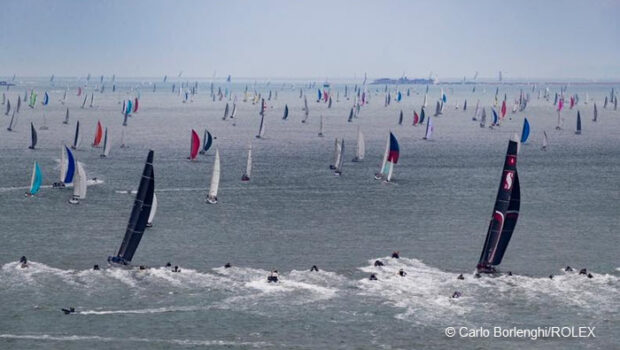



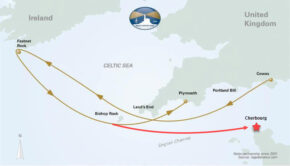
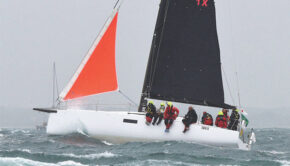
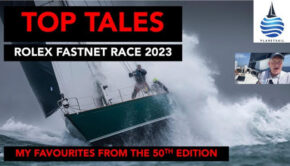
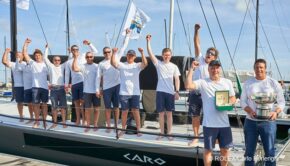
 We’ll keep your information safe.
We’ll keep your information safe.